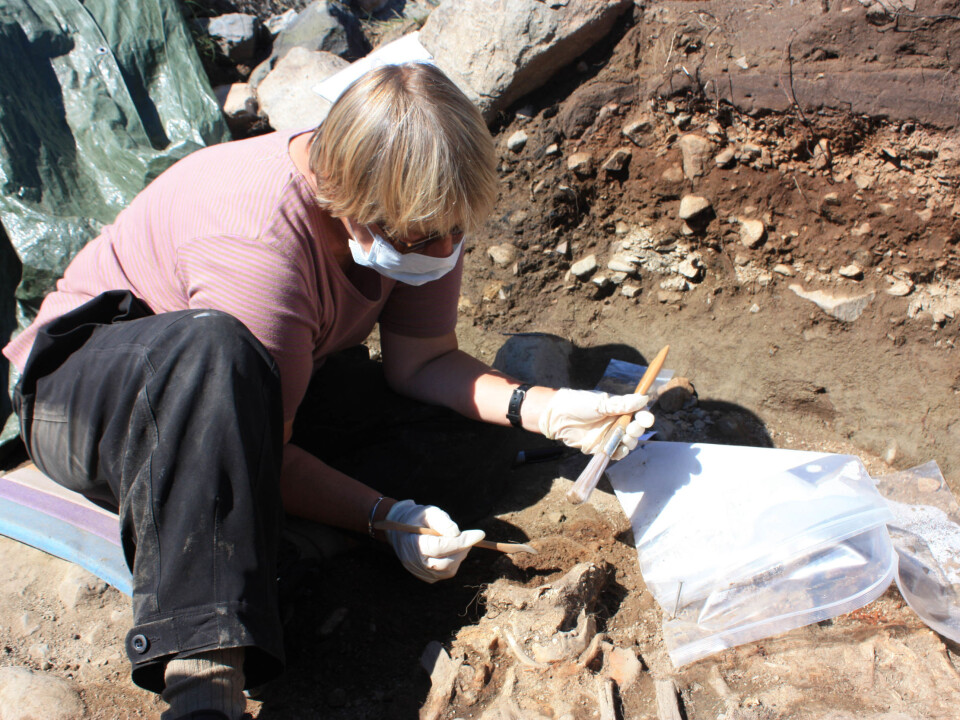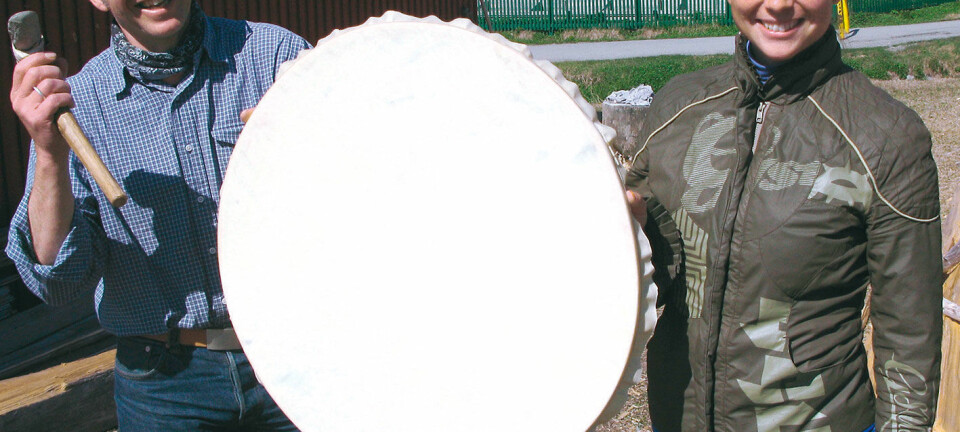
Greenland's Viking settlers feasted on seals, then left
The Norse society did not die out due to an inability to adapt to the Greenlandic diet. An isotopic analysis of the Viking settlers’ bones shows that they ate plenty of seals.
Greenland's Viking settlers, the Norse, disappeared suddenly and mysteriously from Greenland some 500 years ago.
Natural disasters, climate change and the inability to adapt have all been proposed as theories to explain their disappearance. But now a Danish-Canadian research team has demonstrated that an inability to adapt to the Greenlandic diet is unlikely to have been a major cause for their leaving the great island:
“Our analysis shows that the Norse in Greenland ate lots of food from the sea, especially seals,” says Jan Heinemeier, of Aarhus University’s Institute of Physics and Astronomy, in a press release from Copenhagen University.
“Even though the Norse are traditionally thought of as farmers, they adapted quickly to the Arctic environment and the unique hunting opportunities. During the period they were in Greenland, the Norse ate gradually more seals. By the 14th century, seals made up between 50 and 80 percent of their diet,” says Heinemeier.
Norse skeletons reveal seal diet

The Danish and Canadian researchers are studying the 80 Norse skeletons kept at the University of Copenhagen’s Laboratory of Biological Anthropology in order to determine their dietary habits.
From studying the ratio of the isotopes carbon-13 and carbon-15, the researchers determined that a large proportion of the Greenlandic Norse diet came from the sea, particularly from seals.
Heinemeier measured the levels of carbon isotopes in the skeletons, Erle Nelson of Simon Fraser University in Vancouver, Canada, analysed the isotopes, while Niels Lynnerup of the University of Copenhagen, examined the skeletons.
“Nothing suggests that the Norse disappeared as a result of a natural disaster. If anything, they might have become bored with eating seals out on the edge of the world,” says Lynnerup.
The skeletal evidence shows signs that they slowly left Greenland. For example, young women are under-represented in the graves in the period toward the end of the Norse settlement. This indicates that the young in particular were leaving Greenland, and when the numbers of fertile women drops, the population cannot support itself.
“The skeletal evidence shows signs that they slowly left Greenland. For example, young women are under-represented in the graves in the period toward the end of the Norse settlement. This indicates that the young in particular were leaving Greenland, and when the numbers of fertile women drops, the population cannot support itself.”
Hunters and farmers
The findings challenge the prevailing view of the Norse as farmers who would have stubbornly stuck to agriculture until they lost the battle with Greenland’s environment. These new findings shake up the traditional view of the Norse as farmers and have given archaeologists reason to rethink those theories.
“The Norse thought of themselves as farmers that cultivated the land and kept animals. But the archaeological evidence shows that they kept fewer and fewer animals, such as goats and sheep,” says Jette Arneborg, archaeologist and curator at the National Museum of Denmark.
“So the farming identity was actually more a mental self-image, held in place by an overclass that maintained power through agriculture and land ownership, than it was a reality for ordinary people who were hardly picky eaters,” she adds.
The first Norse settlers brought agriculture and livestock such as cattle, sheep, goats and pigs from Iceland. While they thought of themselves as farmers, they were not unfamiliar with hunting.
They quickly started to catch seals, as seal meat was a necessary supplement to their diet. Toward the end of their stay, they became as accustomed to catching seals as the Inuit, who had travelled to Greenland from Canada around the year 1200 and inhabited the island alongside the Norse.
Seals became more important for Norse survival as the climate began to change over time and it became increasingly difficult to sustain themselves through farming.
“The Norse could adapt, but how much they could adapt without giving up their identity was limited," says Arneborg. "Even though their diet became closer to that of the Inuit, the difference between the two groups was too great for the Norse to become Inuit.”
The isotopic analysis is an interdisciplinary collaboration between Aarhus University, the University of Copenhagen, the National Museum of Denmark and Simon Fraser University in Vancouver, Canada.
The findings are presented in a series of articles in the Journal of the North Atlantic, Special Volume 3, 2012. (See links below)
Read more about the Norse in the box below this article.
Scientific links
- An Isotopic Analysis of the Diet of the Greenland Norse. Journal of the North Atlantic
- Human Diet and Subsistence Patterns in Norse Greenland AD c.980–AD c.1450: Archaeological Interpretations. Journal of the North Atlantic
- Isotopic Analyses of the Domestic Animals of Norse Greenland. Journal of the North Atlantic
- Norse Greenland Dietary Economy ca. AD 980–ca. AD 1450: Introduction. Journal of the North Atlantic







